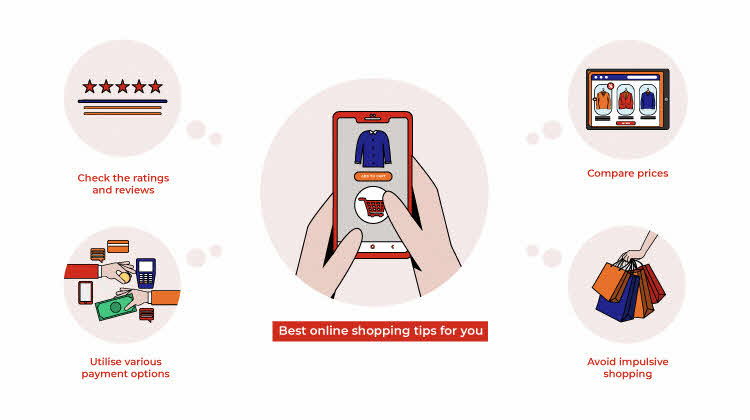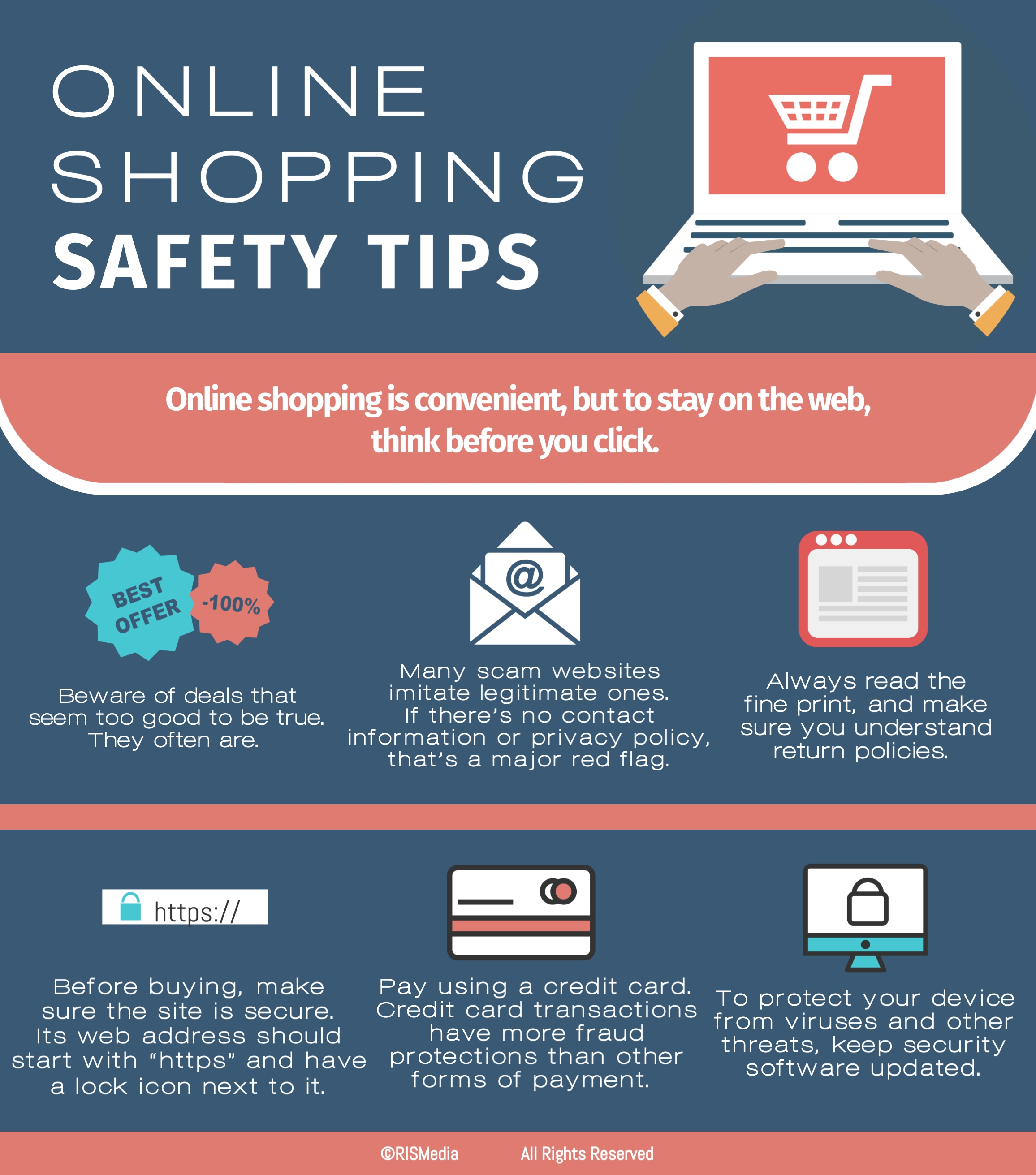Online Shopping Tips: How to Shop Safely and Smartly
Online shopping has revolutionized the way we purchase goods and services, offering convenience and variety at our fingertips. However, with this convenience comes certain risks. To make the most of your online shopping experience while staying safe, here are some essential tips to keep in mind.

1. Choose Trusted Online Stores
One of the most important tips for online shopping is to always shop from trusted websites. Well-known retailers such as Amazon, eBay, and Walmart often offer secure payment methods, buyer protection, and reliable shipping.
When shopping from lesser-known websites, check for reviews, ratings, and certifications to ensure you’re dealing with a reputable seller. Look for security features such as HTTPS in the URL and a padlock symbol next to it, indicating a secure connection.
“Always prioritize reputable online stores to avoid scams and fraudulent sellers.”
2. Compare Prices and Read Reviews
Before making a purchase, take time to compare prices across different websites. Many price comparison tools and apps are available that can help you find the best deals.
Also, reading customer reviews can provide valuable insights into the quality of the product and the reliability of the seller. Look for verified buyer reviews and check for patterns in feedback—positive or negative.
Pro Tip: Look for detailed reviews that provide both pros and cons of the product, not just overall ratings.
3. Use Strong Passwords and Enable Two-Factor Authentication
When creating an account for online shopping, always use strong and unique passwords. Avoid reusing passwords from other websites, and ensure your password includes a combination of letters, numbers, and special characters.
Enabling two-factor authentication (2FA) adds an extra layer of security, requiring you to verify your identity through an additional method, such as a one-time code sent to your phone.

4. Look for Discounts and Coupons
Everyone loves a good deal! Before finalizing your purchase, search for discount codes or coupons that might apply. Many websites offer promotional codes that can help you save money on your purchases, especially during sales or holiday seasons.
Check coupon sites like RetailMeNot or Honey, or even subscribe to the store’s newsletter to receive exclusive discounts.
Tip: Some websites also offer free shipping when you spend a certain amount, so be sure to factor that into your budget.
5. Pay Using Secure Payment Methods
When shopping online, always choose secure payment methods such as credit cards, PayPal, or other payment services that offer buyer protection. These payment methods offer fraud protection, ensuring you get your money back if something goes wrong with the transaction.
Avoid using debit cards for online shopping, as they may not offer the same level of protection.
Secure Payment Methods:
-
Credit Cards
-
PayPal
-
Apple Pay
-
Google Pay
6. Keep Your Personal Information Safe
When making a purchase, ensure that the online store does not ask for unnecessary personal details. Legitimate stores should only require basic information such as your shipping address and payment details.
Avoid sharing sensitive data such as your social security number or bank account details unless it is absolutely necessary. Use encrypted payment systems to protect your data.
“Never share sensitive personal details unless you’re confident in the security of the website.”
7. Understand the Return and Refund Policies
Before buying anything online, make sure you understand the store’s return and refund policies. Some stores offer easy returns and full refunds, while others may charge restocking fees or have strict return windows.
It’s essential to know these policies in case you need to return an item or request a refund. Always keep your receipt or order confirmation as proof of purchase.
8. Track Your Orders
After making a purchase, always track your order to ensure it is shipped and delivered on time. Most online stores will provide you with a tracking number and shipping updates.
If there are any issues with delivery, you can quickly contact the retailer or shipping service to resolve the problem.

9. Beware of Fake Reviews and Too-Good-to-Be-True Offers
While reviews can be helpful, they can also be manipulated. Always look for red flags such as an abundance of overly positive or generic reviews. Check for review patterns that might indicate fake reviews, such as reviewers who only review one product or have suspiciously similar writing styles.
Be cautious of deals that seem too good to be true, as they may be a sign of a scam.
Warning Signs of Fake Reviews:
-
Too many five-star reviews in a short time
-
Reviewers with no other product reviews
-
Generic or overly vague language
10. Be Cautious with Public Wi-Fi
Avoid shopping on public Wi-Fi networks, as they are often not secure and can be easily hacked. If you must shop on public Wi-Fi, use a Virtual Private Network (VPN) to encrypt your connection and protect your data.
Tip: It’s always better to shop using a secure home Wi-Fi network or mobile data when possible.
“Shopping over public Wi-Fi without protection is risky—ensure your connection is secure before entering any payment details.”
11. Monitor Your Bank Statements
Keep an eye on your bank and credit card statements for any unauthorized transactions. If you notice anything suspicious, contact your bank or credit card company immediately.
Many banks now offer alerts for purchases, which can help you stay on top of your spending and catch any fraudulent activity early.
12. Avoid Phishing Scams
Phishing scams are attempts by fraudsters to steal your personal information by tricking you into clicking on fake links or providing your credentials on fraudulent websites. Be cautious of unsolicited emails or messages asking for sensitive information.
Always verify the sender’s email address and avoid clicking on suspicious links. If in doubt, go directly to the retailer’s website rather than using links in emails.
Signs of Phishing:
-
Generic greetings (e.g., “Dear customer”)
-
Misspelled words or unusual language
-
Unsolicited offers or urgent requests for information
FAQs About Online Shopping
1. How do I know if a website is safe for online shopping?
Look for “HTTPS” in the URL and a padlock symbol next to it, indicating a secure connection. You can also check reviews and ratings on independent platforms to see what other customers are saying.
2. Can I get my money back if I buy something online and it’s faulty?
Yes, many online stores offer return and refund policies, but it’s important to check the specific return policy before purchasing. Ensure you keep receipts and order confirmations for proof.
3. What are the best payment methods for online shopping?
Credit cards, PayPal, and digital wallets like Apple Pay and Google Pay are some of the safest payment methods as they offer fraud protection.
4. How do I avoid being scammed when shopping online?
To avoid scams, always shop from trusted retailers, use secure payment methods, and be cautious of deals that seem too good to be true. Also, look for fake reviews and phishing attempts.
5. Is it safe to shop online using my phone?
Yes, shopping from your phone is safe as long as you follow security best practices. Ensure your device has updated security software, and avoid shopping over public Wi-Fi without using a VPN.
By following these online shopping tips, you can make informed and safe purchases that protect both your money and personal information. Always remember to shop wisely, take your time comparing products, and prioritize security for a smooth and enjoyable shopping experience.





